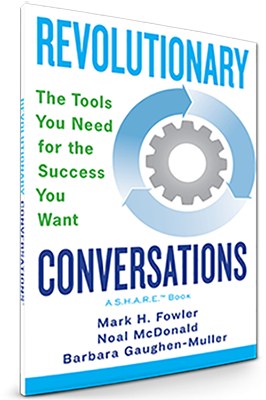
As a year comes to an end, we often take stock of where we’ve been and where we want to go. After the experiences of 2020, we have a lot to think about. One bright spot on the horizon is the potential to get the COVID-19 virus under control. It will be a blessing in so many ways. Businesses can open again; we can take a longer view of our economic future.
Thinking about business growth got me considering the idea of upskilling. It sounds like another piece of jargon, but what resonates with me is the idea of preparing businesses and individuals to keep up with technology in every aspect of work. We live in a time of transition, where technology in the form of AI (Artificial Intelligence), is taking over more and more of the mundane, repetitive tasks we humans have been doing. Sounds great, unless it’s your job AI is taking over. It’s also not great for employers, who are not able to find the people they need to do this more sophisticated work.
So maybe this year, right after losing some weight and getting healthier on our resolution list, we should be thinking about how work is changing and how we can get ahead of the curve.
Organizations
For efficiency and profitability, AI makes sense. The downside is finding people who have the knowledge and skill for new kinds of positions we need to fill. Carrie Duarte, workforce leader of the future for PwC, says “There aren’t enough prospective recruits, and the expense [of hiring new workers] would be enormous. Companies must upskill their existing employees. We’re upskilling all 50,000 of our U.S. employees.”
In the 22nd Annual Global CEO Survey by PwC, “The Upskilling Crisis” they reported that:
- 79% of CEOs are concerned about employees’ lack of skill and the impact on corporate growth
- 60% of employees expect their current skill set to be out of date in 3-5 years
- 46% of CEOs said retraining/upskilling is a top strategy to close the skills gap
Technology moves fast! Getting people engaged and trained to take on new roles takes time, so we need to get started sooner rather than later. Here are some ideas to consider:
- Analyze where you are now and how technology will impact your business in the short- and long-term. For example, in public accounting, it is now possible for technology to take information from client documents and enter it into a basic tax return. That work has traditionally been part of the training process for interns and new hires right out of college. What does this mean for entry-level training for all our organizations? What’s on the horizon for your business?
- Get your employees into the process early. Include them in identifying what things they do that can be done by technology. Collaborate with people on new ways they can grow and be valuable to the company. There are still plenty of “people” things required in every business, so don’t forget to keep training on “soft” skills and management.
- Incentivize learning. Learning new skills is hard; it requires discipline. Encourage people to make the personal investment of time and energy through incentives for success. You may want to consider instituting a tuition reimbursement policy for specific degrees or course work or a bonus for reaching certain milestones. Be sure to include personal recognition from managers and senior managers. It can have a significant impact on employee motivation and retention. A clear learning path can keep the goals top of mind and celebrations for success along the way keep the motivation going.
- Take advantage of all the learning platforms available for training. Through online learning, training can be personalized and targeted to the specific needs of the organization or the individual. Have people in the organization deliver training or act as coaches. Consider working with vendors, universities, or community colleges to provide training or adapt the curriculum to meet specific needs.
- Develop a buddy system for people who are trying to learn new skills. Have someone who knows the new job help the learners with the practical aspects of the work. Only so much can be learned academically. Hands-on learning and application make new skills stick.
There are benefits to all this work. By helping existing employees learn new skills, you will be able to build the workforce you need with people you already know. Millennials and Gen Z stay with organizations that provide opportunities to learn and grow so a robust upskilling program will be very valuable to them. While there are costs to training, you will reduce recruiting costs and boost retention rates. That’s a good return on investment.
Individuals
This is a time to look at your organization and consider how technology can impact the work that you do. You may have been focused on data entry, but as it becomes automated, you may need to know how to analyze the data. They are very different skillsets and you’ll probably need some training to make the transition. As an HR professional, a very people-centered role, I see technology changing the configuration of HR departments. Technology and self-serve options are changing how benefits are administered. The paper chase for evaluations is more paperless, so the clerical aspects of scanning and filling are no longer needed. Recruiting software changes how we interface with candidates, reducing the “administrivia” of resumes, background checks, and orientation. These kinds of things are happening in every area of business.
What kind of tasks are you doing now that could be replaced with technology? Be proactive, start thinking about how things could change and start getting ready now.
- What are you willing to do to prepare for a new career or skill set? Consider the time and energy you have available and how you can configure things to add in more training or education. It’s amazing what you can do if you have a goal in mind.
- Know yourself. Explore your strengths. What kinds of things do you love doing; hate doing. Where do you feel like you’re “in the zone” and time passes in a flash? Direct your efforts in building skill sets that meet the organization’s needs and also fit who you are so you can be successful. Think about what that could look like inside your organization.
- Talk to your manager or HR about what they see happening in your industry over the next several years. Share what you’ve thought about for your current role or other roles you see in the company. If you have a chance, participate in helping design new roles for the company going forward.
- Set your goals. Be sure they align with the organizational vision and strategy. Be realistic. Like those January gym memberships, don’t set yourself up to fail. Think things through and make a plan.
- Enlist a friend/spouse/co-worker to be your cheerleader and coach. Find someone to help hold your feet to the fire to reach your goals, encourage you when things get tough, and is there for the high-fives when you pass a milestone.
This is one of the best investments you can make in yourself. Learning something new takes time, so start now so you can be ready for opportunities that can come your way.
For all of us, wherever we are in the organization, the nature of work is changing dramatically. Let’s get ahead of the curve and prepare ourselves and our organizations to lead the way. You don’t want to be part of a buggy whip factory as the Model T is rolling off the assembly line.
Copyright © 2020 Revolutionary Conversations, LLC. All Rights Reserved
REVOLUTIONARY CONVERSATIONS

Now, possibly more than ever in our history, we need to focus on communication – how we have conversations that move us forward — even when we are stressed beyond belief. Revolutionary Conversations™ and the S.H.A.R.E.™ Tools will give you a platform to develop soft skills and a roadmap to navigate any conversation. From the shop floor to the board room, from the office to the living room, these simple, elegant Tools, will help you build consensus and solve problems, create effective teams, increase engagement with employees, family and friends.
Buy it today and put it to work now!

